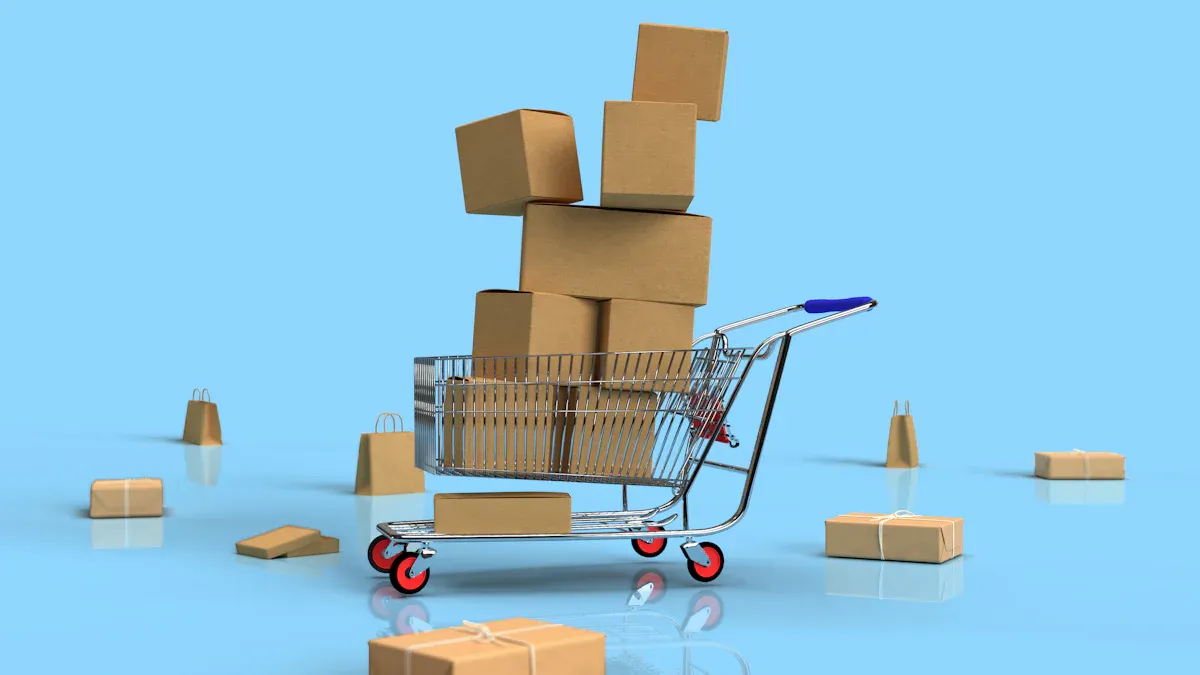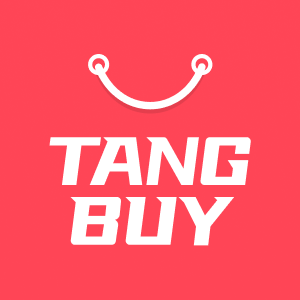The Best Al Tools for Dropshopping Business to Boost Efficiency in 2025

If you want to do well in dropshipping, you need the Best AI Tools for 2025. These tools are AutoDS, Spocket, Canva, ConvertMate, Syncee, Predis.ai, Flair, Tidio, CopyAI, Jasper, Sniffie, Pencil, Drop Genius, and ChatGPT. With these tools, you can make product picking, pricing, stock, order handling, and customer help automatic. AI lets you save time, make fewer mistakes, and keep your customers happy. Many dropshippers have got more sales and made fewer errors by letting AI do jobs like order tracking and quick chat help. Are you ready to change your business? Let’s get started.
Key Takeaways
AI tools help you save time and make fewer mistakes. They do jobs like finding products, setting prices, updating stock, and helping customers. Using AI can help you sell more and make customers happier. It can also help your dropshipping business grow faster and smarter. Free AI tools like Canva, Syncee, and ChatGPT are good for beginners. You can use them to try out ideas and start doing easy jobs automatically. Paid AI tools have more features and better automation. They help you grow your business and make smart choices using data. Pick AI tools that fit your budget and are simple to use. Make sure they work well with your shop and suit your business. Start by automating one or two jobs first. Watch the results and change your tools to do better. Check important numbers like sales, order accuracy, and customer happiness often. This helps you see how AI tools help your shop. Learn how to use AI tools and teach your team too. This makes sure you get the most help and your dropshipping business runs well.
Best AI Tools Overview

Why Use AI in Dropshipping
You want your dropshipping shop to work well and grow quickly. AI tools help you do this. Many dropshippers have problems with bad suppliers, wrong products, and not enough website visitors. AI can help fix these problems. You can use AI to find better suppliers and spot top products by checking market trends. AI also helps you look for new niches, so you always know what is popular and what sells.
AI makes your job easier in other ways too. You can make cool graphics and product pictures in just a few minutes. You do not need to pay a designer. AI can write product descriptions, social media posts, and even blog ideas for you. This means you spend less time on boring jobs and more time growing your shop. You can make smarter choices, avoid mistakes, and keep your customers happy. With the Best AI Tools, you can grow your business and stay ahead of others.
Tip: AI tools help you automate jobs, so you can focus on planning and being creative instead of doing daily tasks.
Key Benefits
When you use the Best AI Tools, you get many good things for your dropshipping shop:
You save up to 30% on costs because AI does repeat jobs.
Your team can do more work without hiring more people. AI writes product descriptions and sorts emails for you.
You get fewer support problems. For example, one coffee brand fixed 70% of their support issues and solved 25% of tickets with AI.
AI helps you manage stock better. It tells you what you need, so you never run out of best-selling items.
You can change prices fast. AI checks the market and updates your prices to help you earn more.
AI makes it easy for customers to find what they want. It makes search better and matches products to their needs.
Your marketing gets better. AI makes social media posts, finds trends, and targets ads to the right people.
You get more sales and happier customers because AI gives them a better shopping experience.
Here is a quick look at the top AI tools for dropshipping in 2025 and what they do:
Tool | Main Function |
|---|---|
AutoDS | Product automation, order fulfilment |
Spocket | Product sourcing, supplier vetting |
Canva | Graphic design, image creation |
ConvertMate | Product description optimisation |
Syncee | Product import, supplier management |
Predis.ai | Social media content automation |
Flair | AI-powered product copywriting |
Tidio | Customer service chatbots |
CopyAI | Marketing copy generation |
Jasper | Content writing, blog automation |
Sniffie | Price monitoring, dynamic pricing |
Pencil | AI ad creation |
Drop Genius | Product research, niche analysis |
ChatGPT | Customer support, content ideas |
You can use these tools in any way that fits your shop. Each tool helps you save time, make fewer mistakes, and grow your business faster.
AI in Dropshipping

Automation
You want your dropshipping business to work well. AI helps by doing boring jobs for you. You do not need to update stock or process orders by hand. Tools such as Spocket, DropGenius, and Logome.ai do these jobs. Here is what they do:
Spocket links you with good suppliers and makes product sourcing, stock updates, and order fulfilment automatic. You get live stock updates, so you do not sell too much or run out.
DropGenius uses AI to find market trends, change prices, and run marketing for you. It helps you beat other shops and make more money.
Logome.ai makes logos and brand kits fast. You do not need to be a designer to have a strong brand.
AI saves time and stops mistakes. Live syncing means you do not run out of stock or sell too much. Many dropshippers say these tools are simple and work with Shopify.

Product Research
Finding good products can be hard and slow. AI research tools make this job easy and quick. You can use Eliotron, Winning Hunter, and Dropshipping CoPilot to spot trends and check what others sell.
Eliotron checks online shops and compares suppliers. It helps you find popular products before others do.
Winning Hunter looks at social media like Facebook, Instagram, and TikTok. It shows what is popular and what your rivals sell.
Dropshipping CoPilot compares suppliers, checks trends, and improves your listings. It works with AliExpress and Shopify.
These tools look at lots of data, like sales, reviews, and social trends. They give you real-time tips. You can use filters to sort products by shipping time, price, or how good the supplier is. This saves you time and helps you sell more. Still, it is smart to check AI tips with your own ideas.
Pricing and Inventory
Getting prices right and tracking stock is very important. AI tools help you manage both. They use smart guesses to see trends, change prices, and keep track of stock.
For example, Prisync checks what rivals charge and market changes. You can change your prices and stock to match the market. AutoDS and DSers make order fulfilment automatic and keep your stock the same on all your shops. Shops using these tools have up to 40% fewer order mistakes and spend 60% less time on admin jobs. Customers are happier too.
AI stock management gives you live updates, so you always know what you have. Tools like Flxpoint stop manual mistakes and help your shop run well as it grows. With AI, you can make better choices and grow your dropshipping business with confidence.
Customer Service
You want your customers to feel heard and valued. AI tools make this much easier for you. With AI-powered chatbots and support systems, you can answer questions any time of day—even when you are asleep. No more waiting for business hours or worrying about missed messages. Your customers get instant help, which keeps them happy and coming back.
AI chatbots, like those used by big brands such as H&M, handle common questions quickly. They take care of things like order tracking, returns, and product details. This means your human team can focus on more complex problems. You do not need to worry about long queues or slow replies. AI can talk to many customers at once, so nobody gets left waiting.
Did you know? AI-driven customer service tools can boost customer satisfaction scores by 10% and cut complaints by 25%. Brands like Coca-Cola have seen an 18% improvement in how people view them, just by using AI to listen and respond better.
AI does more than just answer questions. It can read the mood of your customers. If someone sounds upset, AI picks up on it and responds in a caring way. This makes your support feel more personal and friendly. You build trust with your customers because they feel understood.
Here is what makes AI customer service stand out:
You get 24/7 support across all your channels—no more waiting for office hours.
AI gives fast, accurate answers by pulling from a central knowledge base.
Your shop can handle lots of questions at once, even during busy times.
AI sends helpful updates and reminders, so customers stay informed.
Routine tasks get automated, letting your team focus on tricky issues.
AI also helps your staff. It gives real-time tips and context, so your team can solve problems faster and with fewer mistakes. Predictive AI even spots issues before they become big problems, so you can fix things early.
Gartner predicts that by 2025, three out of four customer service chats will use AI. This shows how important these tools are becoming. If you want to keep your customers happy and loyal, AI customer service is a smart move. You save time, reduce stress, and give your customers the quick, friendly help they expect.
Best AI Tools Review

Free AI Tools
You may want to try free AI tools first. These tools help you test ideas and save money. Here are some of the best free choices.
Syncee
Syncee lets you add products and manage suppliers. You can find many products and add them to your shop easily. Syncee updates your stock for you, so you do not sell items that are out of stock. The free version has fewer features, but it is good for testing new products or suppliers before paying.
Key Features:
Product import from global suppliers
Automatic stock updates
Easy integration with Shopify and WooCommerce
Best for: Product sourcing and supplier management
Canva
Canva helps you make great graphics and product pictures. You do not need to be a designer to use it. There are templates for social media, ads, and product pages. Canva’s drag-and-drop tool makes it simple to create nice images. The free plan gives you lots of templates and pictures. You can pay for more features if you need them.
Key Features:
Graphic design templates
Image editing tools
Social media post creation
Best for: Creating product images and marketing materials
Predis.ai
Predis.ai helps with your social media posts. You can make posts, captions, and hashtags very quickly. The tool checks trends and tells you what to post. The free version lets you keep your shop active online.
Key Features:
Social media post generation
Trend analysis
Hashtag suggestions
Best for: Social media automation and engagement
ChatGPT
ChatGPT answers customer questions and helps you write product descriptions. You can use it to get ideas or help customers. The free version is good for small shops or if you are just starting.
Key Features:
Customer support chatbot
Content generation
Idea brainstorming
Best for: Customer service and content creation
Tip: Free AI tools are good for testing, but you might need to pay as your business grows.
Here is a table with another free AI tool for dropshipping:
AI Tool | Main Features | Pricing | Limitations / Notes |
|---|---|---|---|
Printify | AI Image Generator (free 15 uses daily, beta phase), connects with suppliers, integrates with major platforms | Free plan available | AI Image Generator in beta, limited daily uses, supplier pricing |
Paid AI Tools
If you want more features, paid AI tools can help your dropshipping business grow. These tools give you better automation, data, and support.
AutoDS
AutoDS does product sourcing, order fulfilment, and price checks for you. You can link to many suppliers and run your shop from one place. AutoDS saves time and helps you make fewer mistakes. Many dropshippers use it to work faster and earn more.
Key Features:
Automated product imports
Order fulfilment
Price and stock monitoring
Best for: Automation and scaling your shop
Spocket
Spocket links you with trusted suppliers, mostly from the US and Europe. You get fast shipping and good products. Spocket makes order processing and stock updates automatic. You can try it for free, but the paid plan gives you more products and better suppliers.
Key Features:
Supplier vetting
Fast shipping
Automated order processing
Best for: Product sourcing and supplier quality
ConvertMate
ConvertMate helps you write better product descriptions. It uses AI to make your listings better for search engines and buyers. You can get more sales by making your products easier to find and more interesting.
Key Features:
AI product description writing
SEO optimisation
Listing enhancement
Best for: Improving product listings and SEO
Flair
Flair makes product copy that helps you sell. You can make headlines, bullet points, and descriptions quickly. Flair uses AI to match your brand style and target customers.
Key Features:
AI copywriting
Brand voice matching
Fast content creation
Best for: Product copywriting and branding
Tidio
Tidio gives you AI chatbots for customer service. You can answer questions, track orders, and fix problems any time. Tidio helps you keep customers happy and lowers your support work.
Key Features:
AI chatbots
Live chat integration
Automated responses
Best for: Customer support automation
CopyAI
CopyAI makes marketing copy for ads, emails, and social media. You can make fun content fast. CopyAI saves you time and keeps your marketing fresh.
Key Features:
AI marketing copy generation
Multiple content formats
Fast idea generation
Best for: Marketing and ad creation
Jasper
Jasper writes blog posts, product descriptions, and emails. You can use it to keep your website and social media busy. Jasper’s AI learns your brand and writes in your style.
Key Features:
Long-form content writing
Brand voice adaptation
Content planning
Best for: Content marketing and blogging
Sniffie
Sniffie checks prices and helps you set the best price for your products. You can watch your rivals and change your prices to stay ahead. Sniffie’s AI helps you avoid losing sales because of bad prices.
Key Features:
Price monitoring
Dynamic pricing
Competitor tracking
Best for: Pricing strategy and market analysis
Pencil
Pencil uses AI to make ads that work well. You can make ad images for Facebook, Instagram, and Google in minutes. Pencil tests different ads to see which is best.
Key Features:
AI ad creation
Creative testing
Multi-platform support
Best for: Ad creation and testing
Drop Genius
Drop Genius finds trending products and new niches for you. The AI checks market data and tells you what to sell next. You can stay ahead of trends and grow your shop faster.
Key Features:
Product research
Niche analysis
Trend spotting
Best for: Product discovery and market research
Here is a table comparing some popular paid AI tools for dropshipping:
Tool Name | Key Features | Pricing Example | User Satisfaction Indicators |
|---|---|---|---|
Jungle Scout | Product database, sales analytics, competitor research | Starts at £39/month | Deep insights, helps with product discovery |
Niche Scraper | AI product discovery, analytics, automated pricing | £39.95/month | Finds trends, optimises pricing |
Sell The Trend | AI product discovery, store intelligence, brand builder | £23/month | Real-time insights, improves product selection |
Inventory Source | Automated inventory, supplier integration | £39/month | Reduces manual work, improves satisfaction |
Zik Analytics | Product research, market analysis | Subscription-based | Identifies high-demand products, increases sales |
DSM Tools | Listing automation, price optimisation | Subscription-based | Improves sales margins, reduces stockouts |
AutoDS | Product sourcing, automated orders, price monitoring | Subscription-based | Enhances efficiency and profitability |
DropshipMe | Pre-vetted products, optimised descriptions | Subscription-based | Boosts conversion rates, quality listings |
Ecomhunt | Product research, trend analysis, competitor spying | Subscription-based | Competitive edge, increases sales revenue |
Note: Paid AI tools have more features, better support, and more automation. They help you grow your business and make better choices.
Niche Tools
You may want a tool that fits your shop’s special needs. Some AI tools are made for certain types of shops. For example, Jubilee Beauty is great for beauty and skincare shops. It uses AI to manage your stock and guess what you need. Jubilee Beauty gives your customers product ideas based on their skin type and likes. You can also run special marketing with its AI tips.
Benefits of niche AI tools:
Targeted inventory management
Personalised product recommendations
Automated marketing for your audience
If you sell beauty products, Jubilee Beauty helps you keep the right stock, make customers happy, and boost your sales. You get more profit and a better shopping experience for your buyers.
If you want to stand out in a busy market, niche AI tools can give you the boost you need.
Choosing AI Tools

Decision Criteria
Picking the right AI tools for your dropshipping shop can feel tricky. You want tools that fit your business and help you grow. Here are some things you should look at before you decide:
Budget: Think about how much you want to spend. Some tools are free, but others cost more. Make sure you get good value for your money. A tool with lots of features might save you time and help you earn more, so it could be worth the price.
Ease of Use: Choose tools that are easy to set up and use. If you are not a tech expert, look for simple dashboards and clear guides. You want to spend time selling, not learning new software.
Scalability: Your business will grow. Pick tools that can handle more orders, products, or customers as you get bigger. You do not want to switch tools every few months.
Reviews and Testimonials: Check what other dropshippers say. Honest reviews can show you if a tool works well or if it has problems. Look for feedback about customer support too.
Integration: Make sure your AI tools work with your shop platform, like Shopify or WooCommerce. Good integration means less hassle and fewer mistakes.
Performance Tracking: Use tools that let you see how well they work. You should be able to track sales, customer chats, or ad results. This helps you know if the tool is helping your business.
Security and Compliance: Protect your customers’ data. Pick tools that follow data protection laws and keep information safe.
Tip: Make a checklist with these points. It helps you compare tools and pick the best one for your shop.
Assessing Needs
Every dropshipping shop is different. You need to think about what your business really needs. Start by asking yourself a few questions:
Do you need help finding products or managing stock?
Is customer service taking up too much time?
Are you struggling with marketing or making ads?
Do you want to improve your product descriptions or website content?
Write down your biggest problems. Then match them to the main features of each AI tool. For example, if you spend hours answering customer questions, a chatbot like Tidio or ChatGPT could save you time. If you want better product images, Canva might be your best friend.
You can also use a simple table to match your needs to the right tools:
Business Need | Best AI Tool(s) |
|---|---|
Product Sourcing | Spocket, Syncee |
Customer Service | Tidio, ChatGPT |
Marketing & Ads | Predis.ai, Pencil |
Product Descriptions | ConvertMate, Flair |
Price Monitoring | Sniffie, AutoDS |
Integration
Once you pick your tools, you need to connect them to your shop. Integration should be smooth and quick. Most top AI tools offer easy plugins or apps for Shopify, WooCommerce, and other platforms. You just follow a few steps, and you are ready to go.
If you use more than one tool, check that they work well together. For example, your product research tool should send data to your inventory manager without problems. Good integration means less manual work and fewer errors.
Note: Always test your tools after you set them up. Make sure they update stock, answer customer questions, or create ads as promised. If you run into trouble, most tools have support teams or help guides.
Choosing the right AI tools and setting them up well can make your dropshipping business faster, smarter, and more profitable. Take your time, compare your options, and pick what fits your goals best.
Implementing AI Tools

Planning
Before you jump into using AI tools, you need a clear plan. Think about what you want to achieve. Do you want to save time on order processing? Are you looking to boost your marketing or improve customer support? Write down your main goals. This step helps you pick the right tools for your shop.
Next, look at your current systems. Check if you use Shopify, WooCommerce, or another platform. Make a list of the tasks you want to automate. For example, you might want to automate stock updates, pricing, or customer chats. When you know what you need, you can focus on tools that fit your business.
Tip: Start small. Pick one or two areas to automate first. You can always add more tools later.
Integration Steps
Now you are ready to connect your AI tools to your shop. Start by checking if your chosen tools work with your platform. Most top AI tools support Shopify and WooCommerce. Some platforms, like Wix, even have built-in AI features. This makes setup much easier.
Follow these steps for a smooth integration:
Check Compatibility
Make sure your AI tool matches your shop platform. Look for plugins or apps that connect directly.Start Small
Test the tool with a small group of products or a single process. For example, try automating order fulfilment for just one product line.Follow Documentation
Use the guides and help articles from the tool provider. Good documentation saves you time and helps you avoid mistakes.Monitor Performance
Watch how the tool works. Track key numbers like order speed, stock accuracy, or customer response times.Adjust as Needed
If you spot problems, tweak your settings. You might need to change how often the tool updates prices or stock.
Note: Gradual integration helps you spot issues early. You can fix small problems before they affect your whole shop.
Here’s a quick table to help you remember the steps:
Step | What to Do |
|---|---|
Check Compatibility | Match tool with your platform |
Start Small | Test with a small segment |
Follow Documentation | Use setup guides |
Monitor Performance | Track results and metrics |
Adjust as Needed | Make changes based on feedback |
Training
Once your AI tools are live, you need to train yourself and your team. Spend time learning how each tool works. Most providers offer video tutorials, FAQs, and support chats. Use these resources to get comfortable.
Show your team how to use the new features. For example, teach them how to check automated reports or respond to AI-generated customer messages. Encourage everyone to ask questions and share tips.
Remember: The more you practise, the easier it gets. Regular training helps you get the most from your AI tools and keeps your shop running smoothly.
Monitoring
Once you set up your AI tools, you need to keep an eye on how they perform. Monitoring helps you spot what works and what needs fixing. You want your dropshipping shop to run smoothly and make more sales. Good monitoring gives you the power to do just that.
Start by tracking the right numbers. These numbers show if your AI tools help your business grow. Here are some important things you should watch:
Conversion rate – This tells you how many visitors buy something. If your AI tool suggests products or changes your website, check if more people start buying.
Average order value – See if customers spend more when you use AI recommendations.
Customer acquisition cost – Find out how much you spend to get a new customer. AI can help lower this by targeting the right people.
Customer lifetime value – This shows how much money you make from each customer over time. AI can help keep customers coming back.
Return on ad spend – Check if your AI-made ads bring in more money than you spend.
Fulfilment and shipping times – Make sure your AI tools help you send orders faster.
Order accuracy rate – Watch for fewer mistakes in orders. AI should help you get things right.
Customer satisfaction – Use surveys or reviews to see if people are happier with your service.
Refund and return rates – Lower rates mean your AI tools help you pick better products and manage orders well.
Personalisation uplift – Look at things like recommendation click rate, conversion uplift, or chatbot resolution rate. These show if your AI features really help.
Tip: Set up a simple dashboard or spreadsheet to track these numbers each week. This makes it easy to spot trends and act fast.
You can also use A/B testing. Try running your shop with and without an AI feature for a short time. Compare the results. If your conversion rate or order accuracy goes up, you know the AI tool works.
Here’s a quick table to help you remember what to track:
Metric | What It Shows |
|---|---|
Conversion rate | How many visitors buy |
Average order value | How much each customer spends |
Order accuracy rate | How many orders are correct |
Customer satisfaction | How happy your customers feel |
Recommendation click rate | How often people click AI suggestions |
Chatbot resolution rate | How many issues AI chatbots solve |
Keep checking these numbers. If you see a drop, your AI tool might need an update or retraining. When you spot a win, double down on what works. Monitoring helps you stay ahead and keep your dropshipping business growing.
Free vs Paid Tools

Free Tools Pros
You might wonder if you can run your dropshipping business using only free AI tools. The good news is, you can get started without spending a penny. Free AI tools give you a chance to test new ideas and see what works for your shop. You do not need to worry about upfront costs or long contracts.
Here are some of the main benefits you will enjoy with free AI tools:
You can use tools like ChatGPT and Perplexity for unlimited product research, customer support, and automation. Many dropshippers use these tools to discover new products and answer customer questions quickly.
AI store builders, such as the AutoDS AI Shopify store builder, help you set up your shop, optimise listings, and design your store. Users have launched shops in record time, saving hours of manual work.
Free AI product finders scan market trends, customer reviews, and sales data. You can spot winning products faster and stay ahead of your competitors.
Canva’s free plan lets you create professional graphics and product images. You do not need design skills to make your shop look great.
AI price monitoring tools track supplier prices and stock levels. You can keep your prices competitive and avoid selling out-of-stock items.
Many dropshippers share success stories about how these tools improved their efficiency, accuracy, and customer service.
Tip: Free AI tools are perfect for testing the Best AI Tools before you decide to invest in paid versions.
Free Tools Cons
Free AI tools sound great, but they do have some limits. You might find that you need to do more work by hand or miss out on advanced features.
Here are some common drawbacks you should know:
AI cannot fully automate everything. You still need to choose products and set up your shop yourself.
Free tools often lack advanced features. For example, you cannot use image generation with ChatGPT unless you pay for ChatGPT-4.
Content from free AI tools may need editing. You might have to fix product descriptions or social media posts to make them fit your brand.
Some tools limit what you can do. For instance, Speechify’s free version has fewer voice options, and PixelCut requires an upgrade for better image backgrounds.
Free AI outputs are usually general. You may not get detailed data or specific numbers, so you need to do extra research.
Only some tasks, like order processing and shipping, can be fully automated with free tools. Product selection and store creation still need your input.
Note: Free tools are great for starting out, but you may need more power as your business grows.
Paid Tools Pros
When you want to take your dropshipping business to the next level, paid AI tools offer a big boost. You get more features, better automation, and deeper insights.
Here’s what you can expect from paid AI tools:
You can automate key tasks like product selection, pricing, inventory, order fulfilment, and customer support. This saves you time and cuts costs.
Paid tools analyse market trends and customer behaviour. You get data-driven advice to help you pick the best products and predict what will sell.
AI personalises your shop. It gives customers product suggestions and sends them messages that feel personal.
Your marketing gets a lift. AI writes better product descriptions, creates email campaigns, and makes social media posts for you.
Advanced features include predictive analytics, chatbots, image recognition, and dynamic pricing. These help you make more profit and keep customers happy.
Many dropshippers say paid tools help them scale up, improve customer engagement, and stay ahead in a busy market.
If you want to grow fast and run your shop smoothly, paid AI tools can give you the edge you need.
Paid Tools Cons
You might think paid AI tools are the answer to all your dropshipping problems. They do offer many benefits, but you should know about the downsides before you spend your money. Let’s look at some of the main cons you could face when using paid AI tools.
1. Higher Costs
Paid tools can get expensive. You often pay a monthly fee, and some tools charge extra for more features or users. If you use several tools, the costs add up quickly. For a small shop, this can eat into your profits.
2. Learning Curve
Many paid AI tools come with lots of features. This sounds great, but it means you need to spend time learning how to use them. You might need to watch tutorials or read guides. If you have a team, everyone needs training. This takes time away from running your shop.
3. Over-Reliance on Automation
It’s easy to let AI do everything. If you trust the tool too much, you might miss mistakes or lose your personal touch. Customers like to feel special. If your shop feels too robotic, people may not come back.
4. Integration Issues
Not all paid tools work well with every platform. Sometimes, you find that your favourite tool does not connect smoothly with Shopify or WooCommerce. You might need to hire someone to help, or you could spend hours fixing problems.
5. Hidden Fees and Upgrades
Some tools look cheap at first. Later, you find out that you need to pay more for the best features. You might also face limits on how many products or orders you can manage. Always check the fine print before you buy.
6. Data Security Risks
You share a lot of business data with these tools. If the company does not protect your data, you could face problems. Always check if the tool follows data protection laws and keeps your information safe.
Tip: Before you pay for any AI tool, try the free version first. Make sure it fits your needs and works well with your shop. Read reviews and ask other dropshippers about their experiences.
Here’s a quick table to help you remember the main cons:
Paid Tool Con | What It Means for You |
|---|---|
Higher Costs | Less profit, more monthly expenses |
Learning Curve | Time spent on training |
Over-Reliance | Risk of losing personal touch |
Integration Issues | Possible tech headaches |
Hidden Fees | Unexpected extra costs |
Data Security Risks | Potential privacy problems |
Paid AI tools can help your dropshipping business, but you need to weigh the pros and cons. Make sure you pick tools that really help you grow, not just add more work or costs.
Efficiency and Growth

Success Stories
You might wonder if AI tools really make a difference. Let’s look at some real dropshipping shops that have used these tools to boost their business.
Case 1: Fast Fashion Store
You run a fashion shop. You use AutoDS to automate product imports and order fulfilment. Your team saves hours each week. You no longer worry about stock errors. Customers get their orders on time. Your sales go up by 25% in just three months.Case 2: Home Decor Brand
You want better product images and catchy descriptions. You use Canva for graphics and ConvertMate for product copy. Your website looks more professional. Shoppers stay longer and buy more. Your conversion rate jumps from 1% to 3%.Case 3: Niche Gadget Shop
You struggle with customer questions. You add Tidio’s AI chatbot. Now, customers get instant answers, even at night. You see fewer complaints and more repeat buyers. Your customer satisfaction score rises by 15%.
Real shops use AI tools to save time, reduce mistakes, and make customers happy. You can do the same.
Here’s a quick table showing the impact of AI tools:
Shop Type | AI Tool Used | Main Result |
|---|---|---|
Fashion | AutoDS | 25% sales growth |
Home Decor | Canva, ConvertMate | 2x conversion rate |
Gadget | Tidio | 15% higher satisfaction |
Optimisation Tips

You want to get the most from your AI tools. Here are some easy ways to boost your shop’s efficiency and growth:
Start Small
Pick one task to automate first. You might choose product research or customer service. Test the tool and see how it helps.Set Clear Goals
Decide what you want to improve. Do you want faster order processing? More sales? Write down your targets.Track Your Results
Use simple dashboards or spreadsheets. Watch your sales, conversion rates, and customer feedback. Adjust your tools if you see problems.Keep Learning
AI tools change fast. Check for updates and new features. Watch tutorials or join online groups to learn tips from other dropshippers.Mix and Match Tools
Try using two or three tools together. For example, use Spocket for sourcing and Canva for images. This gives you more power without extra work.
Tip: Review your AI tools every few months. Remove what you don’t use. Upgrade if you need more features.
You can grow your dropshipping business by using AI tools wisely. Start simple, keep learning, and always look for ways to improve. Your shop will run smoother, and your customers will notice the difference.
AI tools give you a real boost in dropshipping. You can automate boring jobs, improve accuracy, and make your customers happier. With AI, you get smart product suggestions, better prices, and 24/7 support. You also spot trends early and help shoppers find what they want with visual search. Try out these tools and see which ones fit your shop best. Want to stay ahead in 2025? Start using AI now! Share your questions or stories in the comments—let’s learn together.

FAQ
What is the best AI tool for beginners in dropshipping?
If you are just starting, try Syncee or Canva. Both tools are easy to use. You can quickly add products or create images. You do not need any special skills. These tools help you learn fast.
Can I run my dropshipping shop using only free AI tools?
Yes, you can start with free tools like ChatGPT, Canva, and Syncee. These help you with product research, images, and customer support. As your shop grows, you might want to upgrade for more features.
How do AI tools help with customer service?
AI chatbots like Tidio answer questions day and night. They handle order tracking, returns, and common problems. Your customers get quick replies. You save time and keep people happy.
Will AI tools work with my Shopify or WooCommerce store?
Most top AI tools offer easy integration with Shopify and WooCommerce. You can use plugins or apps. Just follow the setup guides. If you get stuck, support teams can help you.
Do I need to know coding to use AI tools?
No, you do not need coding skills. Most AI tools have simple dashboards and step-by-step guides. You can set up and use them without any tech background.
How do I choose the right AI tool for my business?
Write down your biggest problems. Match them to the main features of each tool. For example, if you need better product images, try Canva. If you want faster order fulfilment, use AutoDS.
Are paid AI tools worth the money?
Paid tools give you more features and better automation. You save time and make fewer mistakes. If your shop is growing, paid tools can help you scale up and earn more.
Can AI tools help me find trending products?
Yes! Tools like Drop Genius and Predis.ai scan market data and social trends. They show you what is popular now. You can spot winning products before your competitors do.
Tip: Try a few tools before you decide. Many offer free trials, so you can see what works best for your shop.

TangBuy: A Smarter Way to Dropship in 2025
If you're looking to stay competitive with dropshipping in 2025, speed and trend-awareness are key. TangBuy helps you stay ahead with real-time product trends, fast fulfilment, and factory-direct sourcing. With over 1 million ready-to-ship items, 24-hour order processing, and seamless Shopify integration, TangBuy makes it easier to test, scale, and succeed in today's fast-moving eCommerce landscape.
See Also
Top Dropshipping Markets To Profit From In 2025
Best Dropshipping Concepts To Earn Income In 2025
Twenty Five Affordable High Margin Items To Grow Stores

